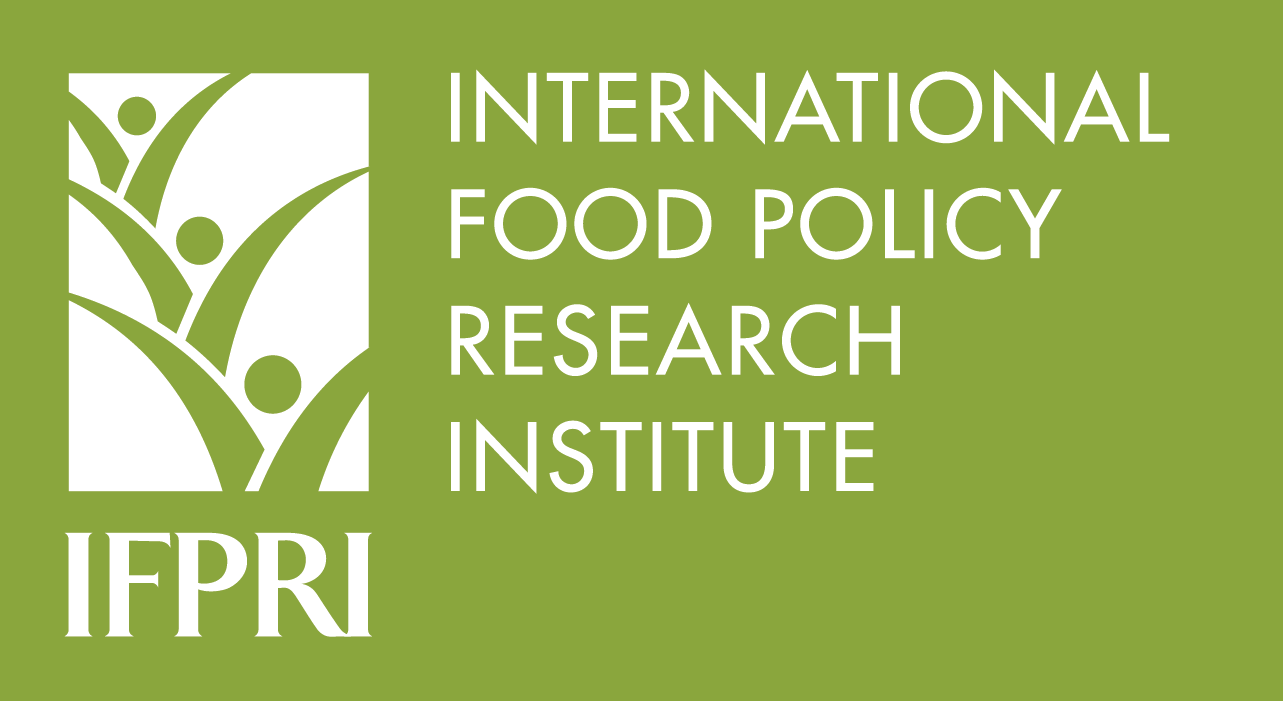Focal point
Location
About IFPRI
The International Food Policy Research Institute (IFPRI) provides research-based policy solutions to sustainably reduce poverty and end hunger and malnutrition in developing countries. Established in 1975, IFPRI currently has more than 500 employees working in over 50 countries. It is a research center of theCGIAR Consortium, a worldwide partnership engaged in agricultural research for development.
Vision and Mission
IFPRI’s vision is a world free of hunger and malnutrition. Its mission is to provide research-based policy solutions that sustainably reduce poverty and end hunger and malnutrition.
What We Do
Research at IFPRI focuses on six strategic areas:
- Ensuring Sustainable Food Production: IFPRI’s research analyzes options for policies, institutions, innovations, and technologies that can advance sustainable food production in a context of resource scarcity, threats to biodiversity, and climate change. READ MORE
- Promoting Healthy Food Systems: IFPRI examines how to improve diet quality and nutrition for the poor, focusing particularly on women and children, and works to create synergies among the three vital components of the food system: agriculture, health, and nutrition. READ MORE
- Improving Markets and Trade: IFPRI’s research focuses on strengthening markets and correcting market failures to enhance the benefits from market participation for small-scale farmers. READ MORE
- Transforming Agriculture: The aim of IFPRI’s research in this area is to improve development strategies to ensure broad-based rural growth and to accelerate the transformation from low-income, rural, agriculture-based economies to high-income, more urbanized, and industrial service-based ones. READ MORE
- Building Resilience: IFPRI’s research explores the causes and impacts of environmental, political, and economic shocks that can affect food security, nutrition, health, and well-being and evaluates interventions designed to enhance resilience at various levels. READ MORE
- Strengthening Institutions and Governance: IFPRI’s research on institutions centers on collective action in management of natural resources and farmer organizations. Its governance-focused research examines the political economy of agricultural policymaking, the degree of state capacity and political will required for achieving economic transformation, and the impacts of different governance arrangements.
Research on gender cuts across all six areas, because understanding the relationships between women and men can illuminate the pathway to sustainable and inclusive economic development.
IFPRI also leads two CGIAR Research Programs (CRPs): Policies, Institutions, and Markets (PIM) andAgriculture for Nutrition and Health (A4NH).
Beyond research, IFPRI’s work includes partnerships, communications, and capacity strengthening. The Institute collaborates with development implementers, public institutions, the private sector, farmers’ organizations, and other partners around the world.
Resources
Displaying 771 - 775 of 1521Agriculture and climate change: The importance of property rights in climate change mitigation
Even with abundant evidence of the urgent need for action on climate change mitigation, there are still those who consider mitigation strategies a burden. In the agricultural sector, climate change mitigation calls for changing some agricultural and resource management practices and technologies and often requires additional investment. However, there is an opportunity in agriculture for net benefit streams from a variety of zero- or low-cost mitigation opportunities ranging from agroforestry practices and restoration of degraded soils to zero-till and other land-management practices.
Agriculture and climate change: The potential for soil carbon sequestration
Of the five principal global carbon pools, the ocean pool is the largest at 38.4 trillion metric tons (mt) in the surface layer, followed by the fossil fuels (4.13 trillion mt), soils (2.5 trillion mt to a depth of one meter), biotic (620 billion mt), and atmospheric pools (800 billion mt). If the fluxes among terrestrial pools are combined, annual total carbon flows across the pools average around 60 billion mt, with managed ecosystems (croplands, grazing lands, and plantations) accounting for 57 percent of that total.
Implications of accelerated agricultural growth on household incomes and poverty in Ethiopia
Ethiopia’s national development strategy, A Plan for Accelerated and Sustained Development to End Poverty for 2005/06 to 2009/10 (PASDEP) places a major emphasis on achieving high rates of agricultural and overall economic growth. Consistent with the PASDEP, Ethiopia is also in the process of implementing the Comprehensive Africa Agriculture Development Programme (CAADP) together with other African governments.
Coordination in natural resource management
Because of their spatial scale, most irrigation systems, forests, rangelands, and fisheries cannot be managed at the individual or household level (Knox McCulloch, Meinzen-Dick, and Hazell 1998). They require some form of coordinated regulation to limit overuse and ensure that there is sufficient investment to sustain the resource base. Even the adoption of “lumpy” technologies (such as equipment) that are not cost effective for a single farm requires some form of coordination.
Impact of soaring food price in Ethiopia
"Previous studies implicitly assume uniform price-effects across regions or provinces within countries. They also do not address the issue of integration between the world food market and local markets. Instead, they assume a complete transmission of changes in world food prices to local food prices. In this paper, we first establish evidence of regional price heterogeneity across Ethiopia. We also applied the Johansen test for market integration over 95 local maize markets and found that none of the Ethiopian regional markets for maize is integrated to the world market.



